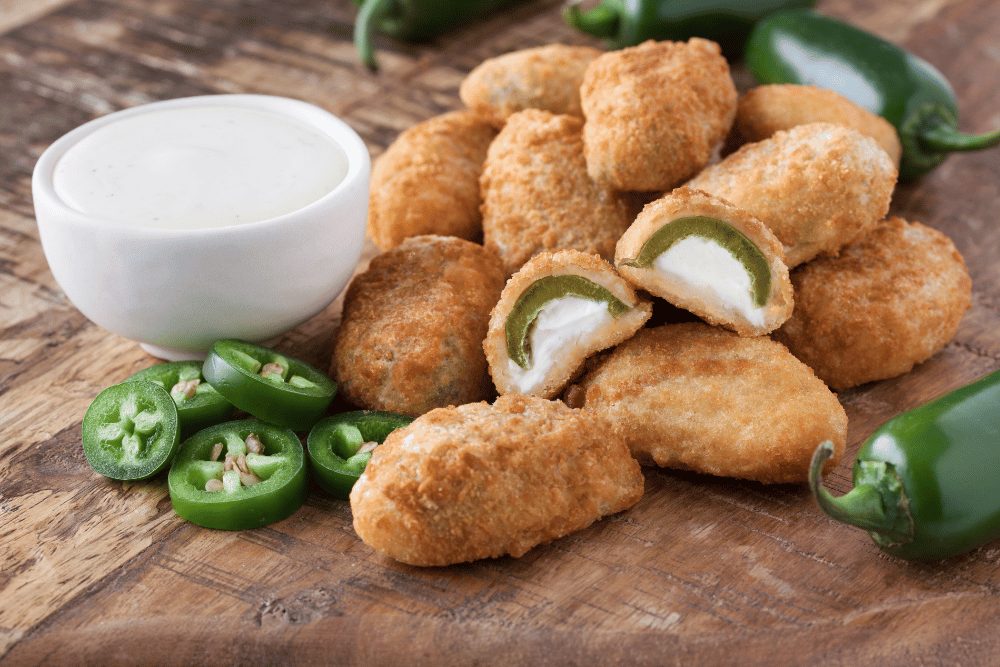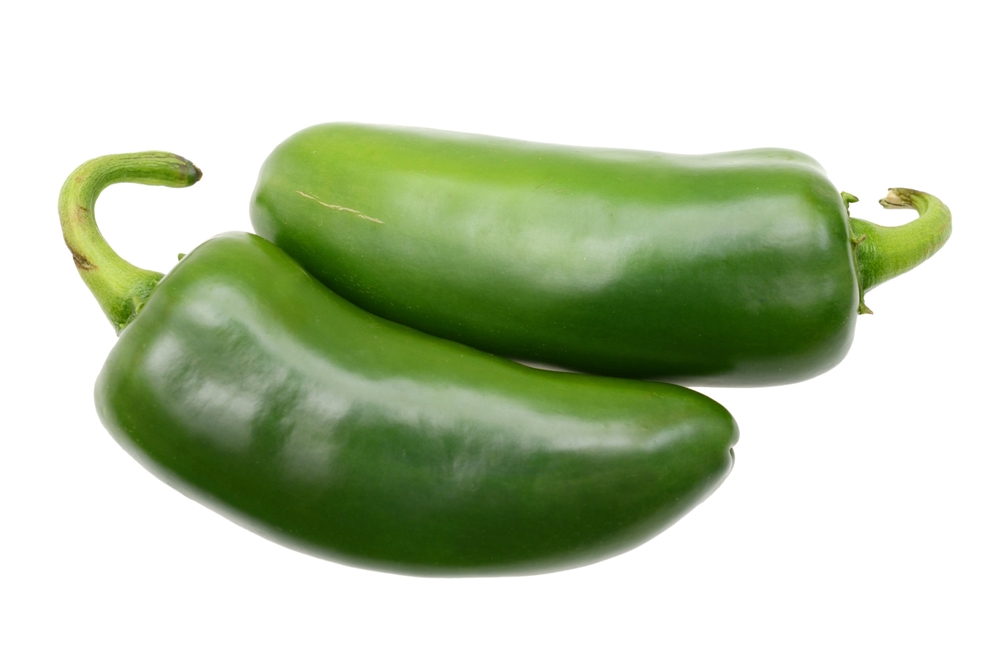A jalapeno on fire perfectly describes the disease-resistant, high-yield, and super-sized Jalafuego. Despite their size, jalafuegos maintain the shape of the classic jalapeno with a thick wall.
What Is A Jalafuego Pepper?
Jalafuego peppers are varieties of the famous jalapeno pepper. Their name combines jalapeno and fuego, the Spanish word for fire. The jalapeno name was inspired by the city of Jalapa (Xalapa) in Veracruz, Mexico, where jalapenos originated.
Origins
Jalafuegos are native to Mexico but are now grown in the U.S. They’re a jalapeno hybrid bred to be bigger, hotter, and resistant to disease. They’re a popular ingredient in Mexican and Tex-Mex cuisine.
Taste
If you’ve tasted a jalapeno before, you know that they have a distinctive flavor. The jalafuego is like a supercharged version of its parent. It has the same crisp, verdant flavor but with more heat and spice.
Appearance
Jalafuegos are similar in appearance to regular jalapenos, but they tend to be larger. They have smooth skin and a dark green color that turns red as they ripen.
Size
Picture a jalapeno on steroids, and you’ll have a good idea of what a jalafuego looks like! These peppers can get up to 5 inches long.

How Hot Are Jalafuego Peppers?
At 4,000 to 6,000 Scoville heat units, jalafuego peppers are hotter than your average jalapeno at their lower range, but milder than the hottest jalapeno. Regular jalapenos are between 2,500-8,000 SHUs.
For context, here are Scoville heat units for some other Capsicum annuum peppers:
- Bell pepper: 0 SHU
- Poblano pepper: 1,000 to 2,000 SHUs
- Jalapeno: 2,500 to 8,000 SHUs
- Cayenne pepper: 30,000 to 50,000 SHUs
- Red Thai Pepper: 50,000 to 100,000 SHUs
What’s The Difference Between Jalafuegos And Jalapenos?
Jalafuegos are a hybrid variety of Jalapenos, so they share some characteristics.
They both have a conical shape and thick flesh. They are green when unripe and turn red when mature. The green in jalafuegos is a bit darker than the standard bright green of the humble supermarket jalapeno.
The difference between the two lies in their heat levels and size. At the low end, jalafuegos can be two times hotter than regular jalapenos. In terms of length, jalapenos can grow up to three inches, while jalafuegos are about five inches long on average.
Compared to the hottest jalapeno, the NuMex Pinata jalapeno chile, jalafuegos pale in comparison. The Numex Pinata can reach a scorching 50,000 SHUs.
How To Use Jalafuegos
Jalafuegos, like their parent jalapenos, are a staple in Mexican and Southwestern cuisines for a good reason. They’re spicy and versatile enough to be eaten raw or cooked.
Here are some ideas on how to use jalafuegos:
- Add raw, finely diced jalafuegos to your next batch of salsa for an extra kick.
- Top your quesadilla with a few slices of fresh jalafuego.
- Make some pickled jalafuegos by slicing them up and adding them to vinegar, salt, sugar, and water.
- Use jalafuegos in your sauces and soups for a nice spicy kick.
- Grill a few slices of jalafuego and serve them as an appetizer for your next barbecue.
- Make jalapeno poppers on steroids! These delicious appetizers are made with fresh jalapeno peppers, cream cheese, and bread crumbs. You can create a jalafuego popper by substituting jalafuegos for the jalapenos. Imagine how much cheese you can stuff in a pepper almost double the size!
The thick walls of jalafuego makes them perfect for stuffing—meats, cheese, grains, more veggies, you name it! Wrap the peppers in bacon or seal them with toothpicks, then grill, bake, or roast.
Anywhere a jalapeno shines, from soups to sauces, the jalafuego will be equally delicious.

Where To Buy Jalafuego Peppers
Seasonal farmers’ markets are a great place to find jalafuegos, as are some grocery stores with a good selection of produce.
If you can’t find them fresh and are into gardening, order some jalafuego pepper seeds and get growing.
Substitutes For Jalafuegos
Jalapeno peppers are the most common substitute for jalafuegos.
If you’re looking for something with more heat, try serrano peppers. At 10,000-23,000 Scoville Heat Units, serrano peppers are 2.5 times hotter than jalafuego peppers on the lower end.
If you want a family-friendly variation, go for poblano peppers. Poblanos are milder than jalafuegos and terrific for stuffing.
Whatever substitute you choose, adjust the amounts and cooking times accordingly.
Can You Grow Jalafuego Peppers?
Jalafuego pepper plants are easy to grow with proper care and climate. They thrive in USDA hardiness zones 9-12 but can be produced elsewhere if given enough protection from frost.
Seed sowing is the best method; it should be done indoors 8 to 10 weeks before transplanting the pepper seedlings outside. For a square inch of soil, sow 3 to 4 seeds a quarter inch deep and thin to the healthiest plant.
Use fertile soil that is well-drained and warm. The best soil is loamy, with a pH of 6.8. Germination depends on sowing conditions and seed age but generally takes 7 to 14 days.
After two to three weeks, your pepper plants should be ready for transplanting. If using pots, ensure they’re at least 14 inches deep.
Peppers are heavy feeders, so it’s important to use fertilizers regularly. Peppers are sensitive to overwatering, so check the soil first before watering. You can also use mulch to help retain moisture.
For higher yield, consider pruning your plants. Pruning is best done when the plants are six to eight weeks old.
Jalafuegos are disease- and crack-resistant, so you don’t have to worry about bacterial leaf spots and potato virus Y. However, you should still check your plants regularly for signs of infestation.
Mature jalafuego pepper plants will reach about 1.5 to 2 feet wide and 2 to 2.5 feet tall. In about 70 days, expect extra-large dark green fruits that are flavorful and spicy. You can harvest the peppers when they are green or red.

